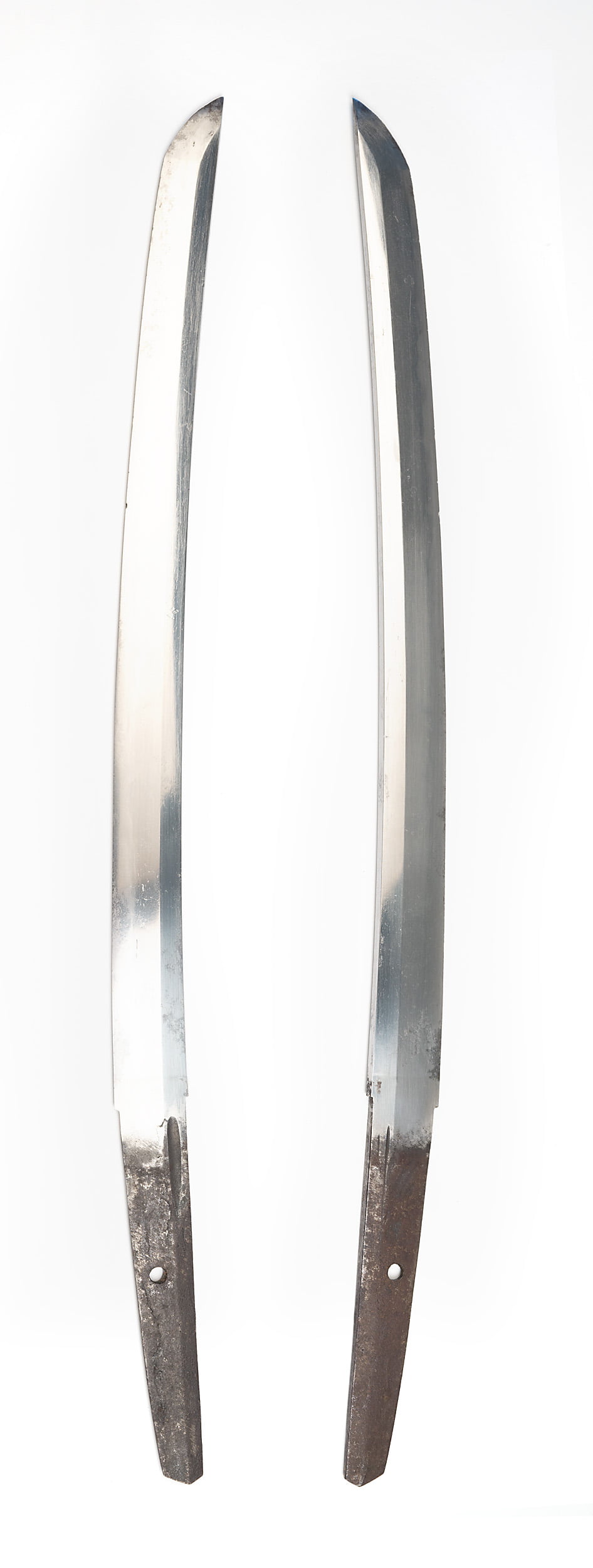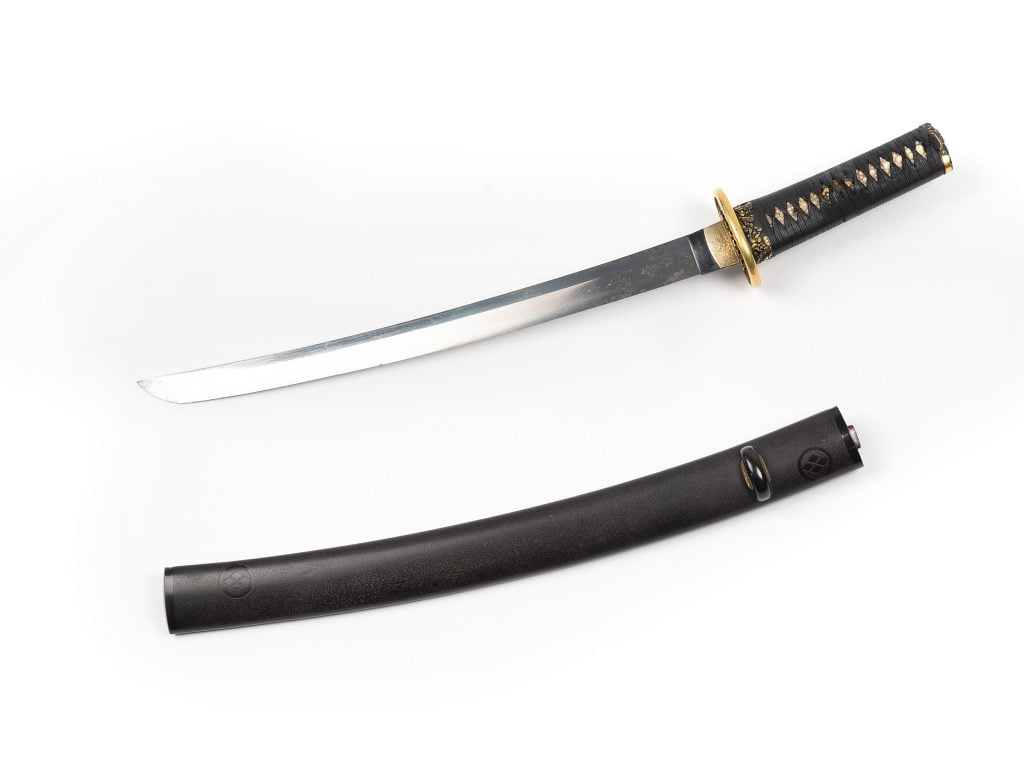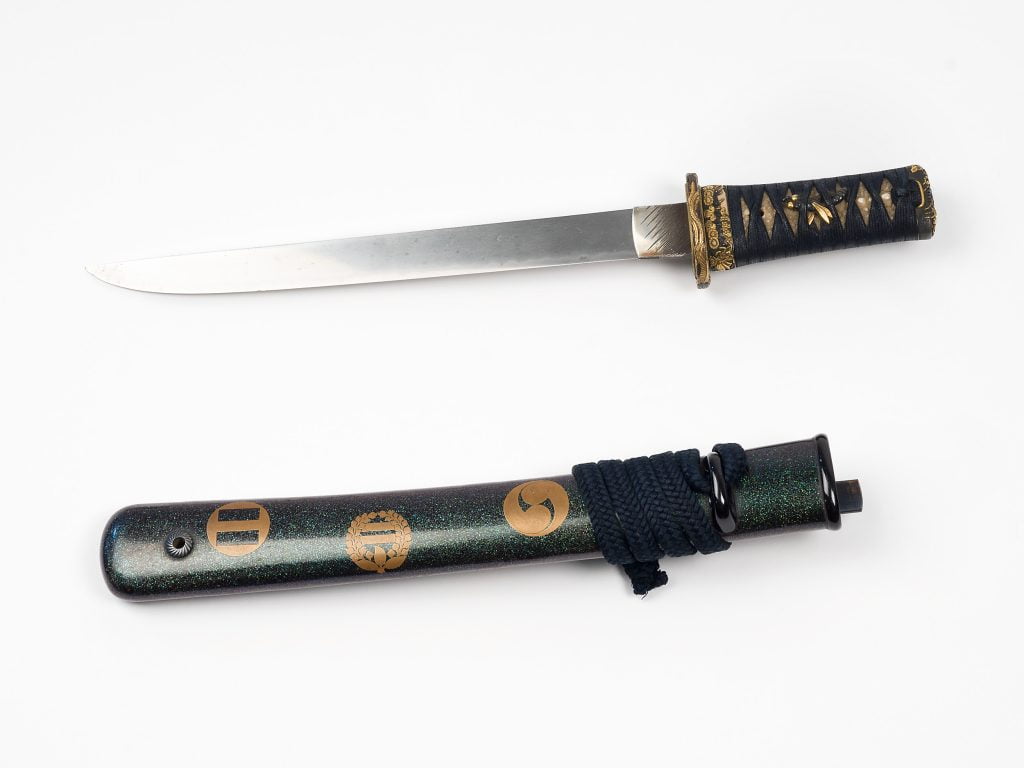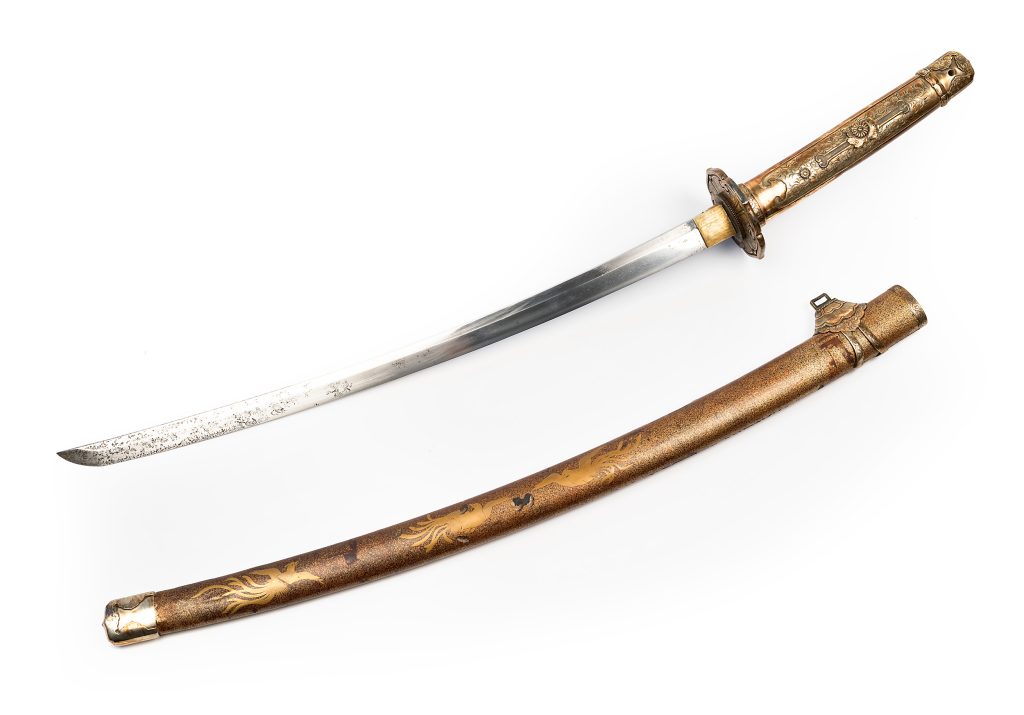Japanese master
Koto Ko-Wakizashi in Koshirae with Hishimon, Japanese Master
Mumei
This ko-wakizashi sword has a blade length (nagasa) of 343 mm (overall length 54 cm) with a shinogi-tsukuri shape, torii-tsori bend, and gyo-no-mune back. The temper line (boshi & kissaki) is komaru with a chu-kissaki, and the hamon is weak ko-motare. The hada pattern (jihada) is weak ko-mokume. The blade dates to the Koto period and has some stains, a small crack in the front third, flaked polish, and some scratches.
The tang (nakago) has a kengyo tip, remnants of koshi-hi on the omote, and gomabashi on the ura. There is one mekugi-ana (peg hole) and no signature (mei).
The handle (tsuka) is made of samegawa (rayskin) on wood, wrapped in fine black silk. The menuki are decorated with horses in iron and gold. The very beautiful and rare tsuba is copper, featuring a man, horse, and tree in shakudo and gold, with a solid gold edge. The fuchi-kashira are shakudo ishimeji with depictions of several bearded men and branches in shakudo, iron, copper, and gold. The blade collar (habaki) is two-part, made of shakudo and brass, and the washers (seppa) are gilded copper.
The kozuka is shakudo nanako-ji, featuring two men on a stool with a tree and baskets in shakudo and gold. The saya (scabbard) is matte black lacquer with hishimon which was used by the famous Takeda clan (historically based in Kai province) who were active from the Heian period until the late 16th century when they were defeated in the Battle of Nagashino in 1575 by Oda Nobunaga and Tokugawa Ieyasu which led the clan to their eventual ultimate elimination.
Provenance:
Albert Polster Collection (Former president of the European branch of the NBTHK), 1986







